Elementary means fundamental, basic, primary. So, here we go to learn about these basic Shapes e.g. Triangles, Angles, Square, lines, Curves etc. We can learn about different shapes, there properties, measurements etc.
As we know that the distance between two or more point called line segments.
Here we can measure the distance of different line segments like−Triangles, Quadrilaterals of line segments.
Measure of each line segment is a unique number called its “length”.


The Distance between two point A and B also know as  , So the length of AB will be 1.8 cm.
, So the length of AB will be 1.8 cm.
1 mm is 0.1 cm. so, you also say 1 cm and 8mm is the measurement of tow point or length of the given line.
As we had discuses about the Angle, Angle is the Corner of the when two or more lines crossed each other at any point, any direction.

So the Angle made here with adjoins of line AB and CD and crossed each other at E.
When the line segments crossed with perpendicularly with opposite direction with moving clockwise direction and the Angle formed is known as Right Angle.
In same way if continue moving the clockwise direction and the angle formed is known as Straight Angle.

One complete turn is called one revolution. The angle for one revolution is a complete angle.
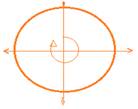
An angle smaller than a right angle is called an acute angle. The range of an acute angle is between 0 and 90 degrees.
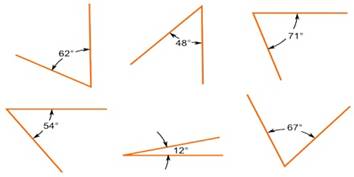
If an angle is larger than a right angle, but less than a straight angle, it is called an obtuse angle. This is a smaller Angle.
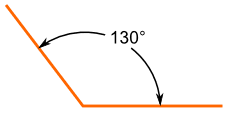
A reflex angle is larger than a straight angle.
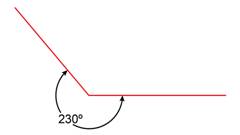
The measure of angle means measure the space between two crossed line segment that is‘degree measure’. One complete revolution is divided into 360 equal parts. Each part will be a degree. We can say or write this to 360° to say‘three hundred sixty degrees’.
The Protractor
A protractor is the tool that helps to measure the Angles. You can get in your‘instrument box’. The tool that is curved edge and shaped is divided into 180 equal parts. Each part is equal to a‘degree’. The markings start from 0° on the right side and ends with 180° on the left side, and vice-versa.
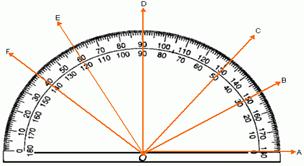
There are various angles formed here in Protractor e.g.
There are six point A, B, C, D, E and F and the Angles formed are <AOB, <AOC, <AOD, <AOD, <AOE and so on.
The Measurements of the these Angles will be-:
∠AOB = 30°
∠AOC = 50°
∠AOD = 90°
∠AOE = 120°
∠AOF = 140° and so on.
When two lines intersect and the angle between them is a right angle, then the lines are said to be perpendicular.
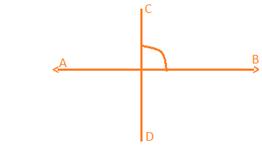
AB Perpendicular on CD and it forms a Right Angle and the value of this angle will be 90° (Ninety Degree).
Do you remember a polygon with the least number of sides? That is a triangle.
Let us see the different types of triangle we can get.
A triangle having all three unequal sides is called a Scalene Triangle.
A triangle having two equal sides is called an Isosceles Triangle.
A triangle having three equal sides is called an Equilateral Triangle.
If each angle is less than 90°, then the triangle is called an acute angled triangle.
If any one angle is a right angle then the triangle is called a right angled triangle.
If any one angle is greater than 90°, then the triangle is called an obtuse angled triangle.
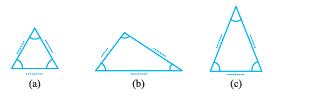
When you find any polygon which has four sides that's called Quadrilaterals.
The quadrilateral is a rectangle when One more obvious property of the rectangle you can see is that opposite sides are of equal length.
If you find any quadrilaterals having of 45°-45°-90° set-squares, you get another quadrilateral this time. It is a square.
When you find the pair of 30° - 60° - 90° set-squares in a different position, you get a parallelogram.
The four angles having 30°−60°−90° set-squares you get a rhombus.
Polygons of 3 or 4 sides known as triangles and quadrilaterals respectively.
| Number of sides | Name | Illustration |
|---|---|---|
4 |
Triangle |
|
4 |
Quadrilateral |
|
5 |
Pentagon |
|
6 |
Hexagon |
|
8 |
Octagon |
|
